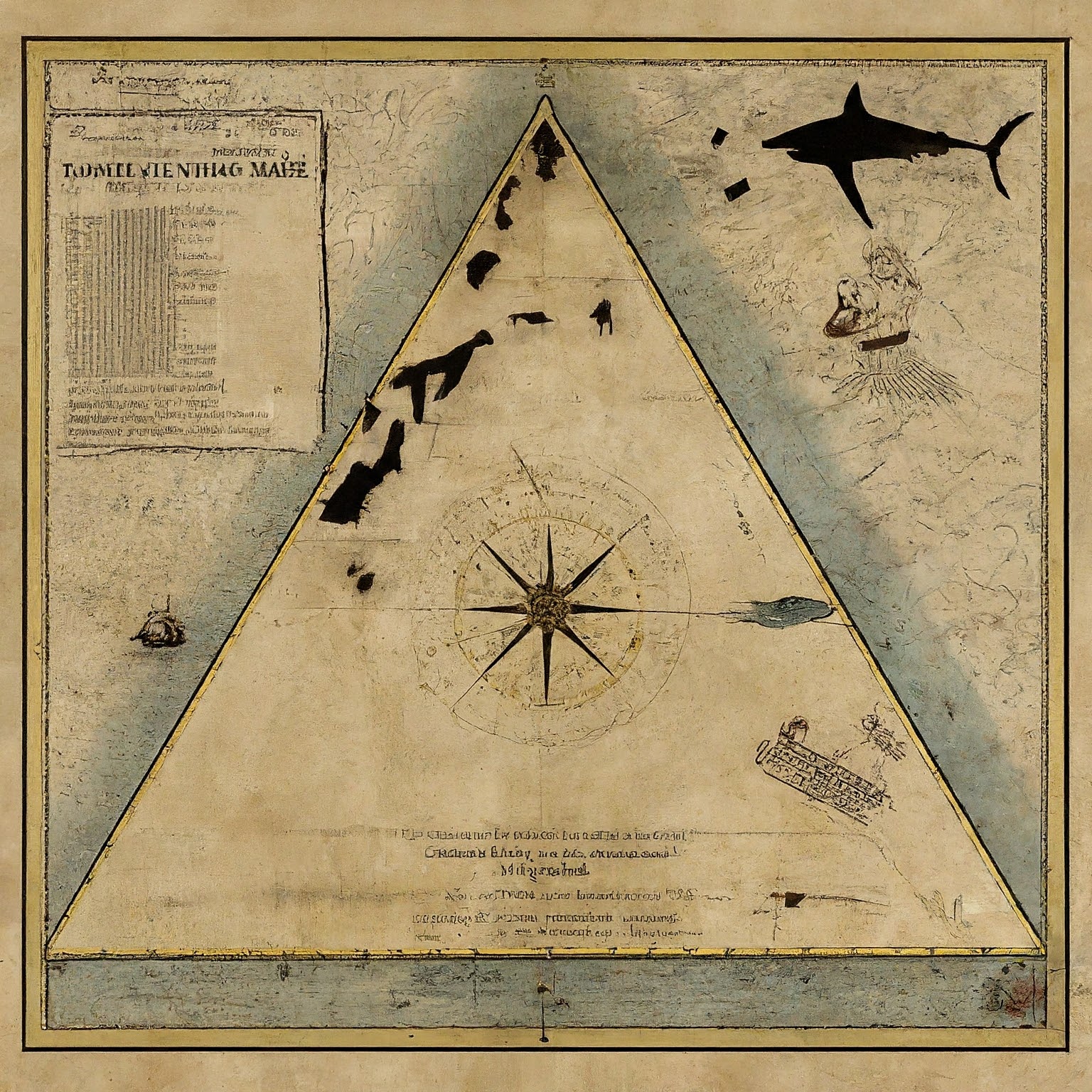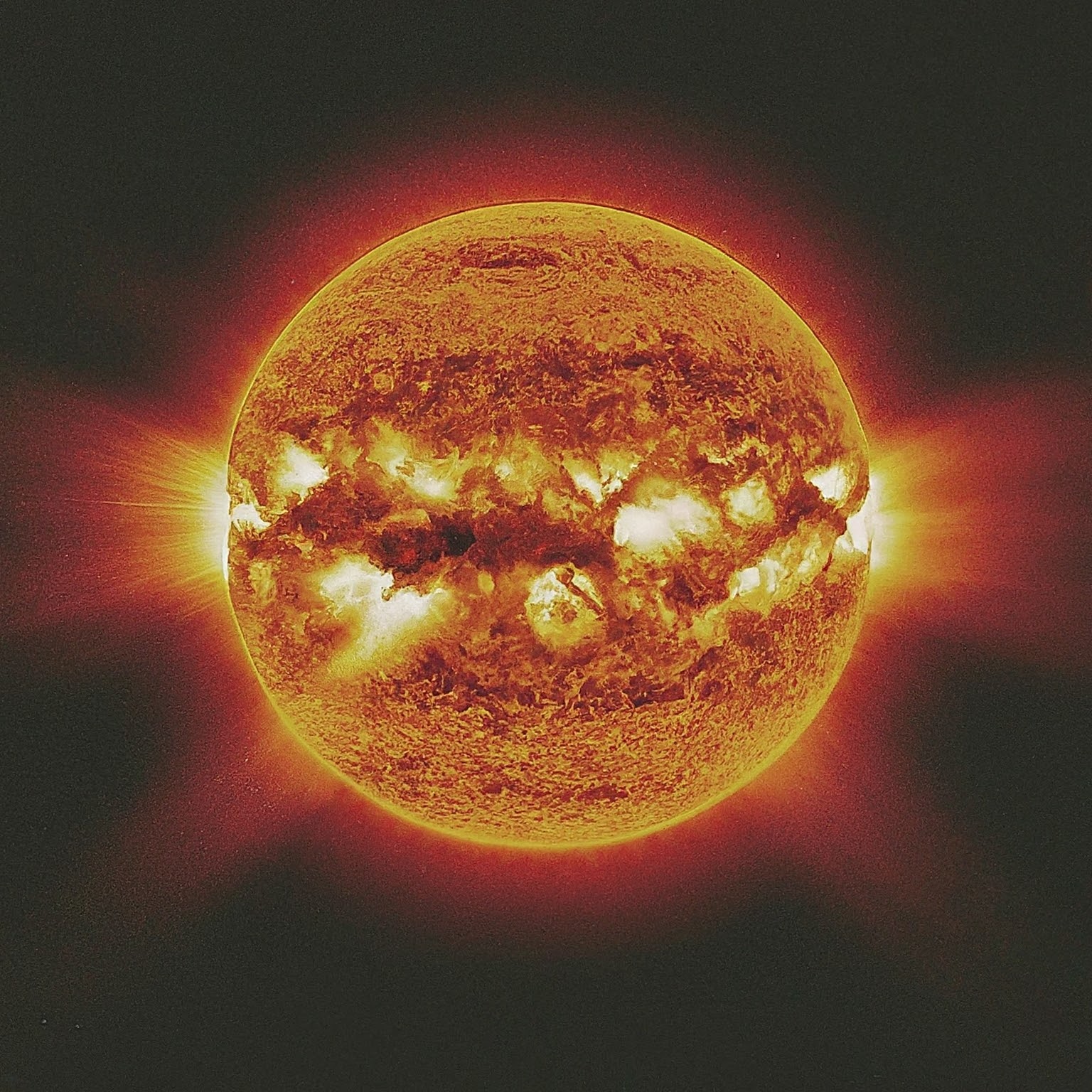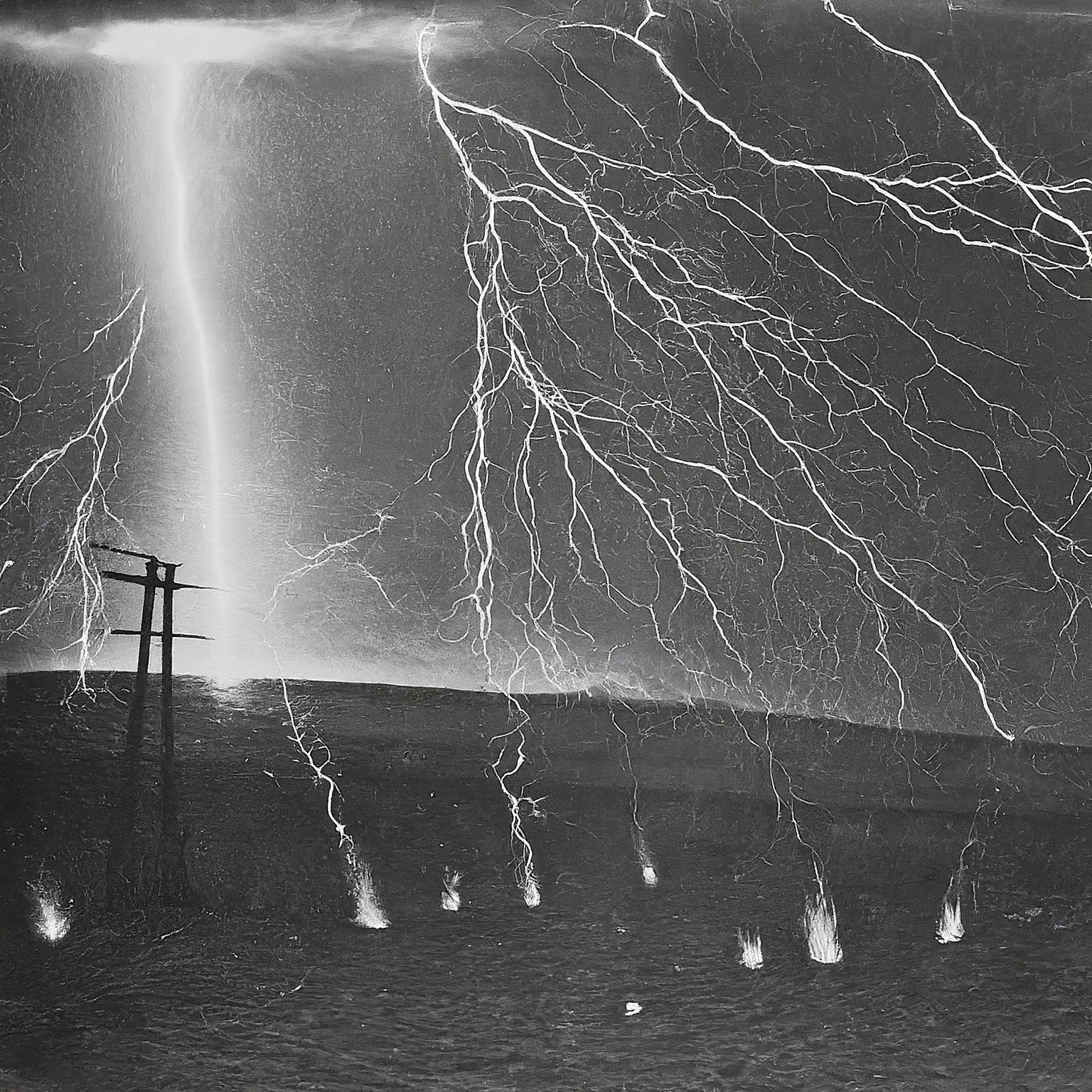Science
Unleashing the Secrets: Vanishing Act – The Bermuda Triangle Mystery

About the Author:
Ahoy there! I’m Captain Henry Jacobs, a salty dog with over two decades navigating the world’s oceans. The Bermuda Triangle, with its shroud of mystery, has always tugged at my curiosity. Today, we’ll set sail on a voyage to understand the facts behind the fiction and explore the science that might explain this enduring maritime whodunit.
Unveiling the Triangle’s Notorious Reputation
The Bermuda Triangle, also known as the Devil’s Triangle, stretches across the western Atlantic Ocean, roughly forming a triangle between Miami, Florida, Bermuda, and Puerto Rico. This region has become synonymous with unexplained disappearances of ships and aircraft. Tales of malfunctioning compasses, sudden storms, and vanishing vessels have captured imaginations for centuries, fueling a reputation for the extraordinary.
Fact vs. Fiction: Separating Myth from Reality
While the Bermuda Triangle boasts a reputation for the fantastical, the truth, as is often the case, is less sensational. Let’s set sail to debunk some of the common myths and explore potential explanations:
-
Compass Gone Haywire: The Bermuda Triangle does indeed lie within an area with slight magnetic anomalies. However, for modern sailors, these discrepancies are easily compensated for by sophisticated navigation equipment like GPS.
-
Electronic Fog Shrouds the Area: There’s no scientific evidence to support the existence of an “electronic fog” that disrupts communication and navigation. However, sudden weather changes can certainly affect radio signals, making communication difficult for a time.
-
Monsters Lurk in the Depths: The ocean depths hold many a secret, but there’s no credible evidence of colossal creatures capable of swallowing entire ships whole.

Picture by: Google Gemini
Key Disappearances: A Closer Look
Several high-profile incidents have fueled the mystery of the Bermuda Triangle. Let’s cast a spotlight on two such cases:
| Disappearance | Possible Explanation |
|---|---|
| Flight 19 (1945): Five US Navy bombers vanished without a trace. | This incident has become a cornerstone of the Bermuda Triangle myth. However, upon closer inspection, pilot error, navigational mistakes due to faulty equipment, and fuel exhaustion are considered the most likely culprits. |
| Demeter (1800): A French warship disappeared with all 250 crew members on board. | The Demeter’s fate remains shrouded in some mystery, but researchers believe a powerful hurricane in the area is the most likely explanation for its disappearance. |
Science Steps In: Unveiling the Triangle’s Secrets
While some disappearances remain unexplained, several natural phenomena can contribute to the maritime dangers in the region:
- Sudden Squalls: These fast-moving storms with powerful winds and heavy rain can be incredibly hazardous for vessels, especially smaller ones. The sudden onset of these squalls can catch sailors off guard, leading to disaster.
- The Gulf Stream’s Might: This strong ocean current flows northward along the eastern coast of the United States. Its powerful currents can disorient sailors and push ships off course, leading them into treacherous waters.
- Shallow Reefs and Underwater Hazards: Uncharted reefs and sudden drop-offs in the seabed can pose a significant threat to navigation. Modern sonar technology helps mitigate this risk, but older vessels could have easily met their end on these hidden dangers.
A Comparative Look: Disappearances Around the World
While the Bermuda Triangle captures the public imagination, it’s important to note that disappearances at sea can occur anywhere. Here’s a table comparing the number of reported incidents in the Bermuda Triangle to other regions:
| Region | Estimated Number of Disappearances |
|---|---|
| Bermuda Triangle | 50-100 (over the last century) |
| North Atlantic (excluding Bermuda Triangle) | Upwards of 1,000 (over the last century) |
| South China Sea | Over 100 (over the last two decades) |
This table highlights that disappearances at sea are a more widespread phenomenon, not exclusive to the Bermuda Triangle. The sheer volume of maritime traffic in certain regions naturally leads to a higher number of incidents.

Picture by: Google Gemini
Beyond the Mystery: The Allure of Exploration
Despite its reputation, the Bermuda Triangle remains a heavily traversed shipping lane. Modern technology and improved safety protocols, including mandatory distress beacons and regular communication check-ins, have significantly reduced the number of incidents. The allure of the unknown persists, however, reminding us of the ocean’s
vastness and the thrill of exploration. The Bermuda Triangle is a reminder of the power and respect we owe to the ocean. It’s a dynamic environment with ever-changing weather patterns, strong currents, and hidden hazards. Yet, for some, it’s precisely this element of mystery that beckons.
Modern Exploration and Technological Advancements
Technological advancements have transformed our understanding of the Bermuda Triangle. Sophisticated sonar technology allows for detailed mapping of the seabed, revealing potential hazards and aiding in search and rescue efforts. Underwater exploration vehicles (UUVs) and remotely operated vehicles (ROVs) can delve into the depths, gathering valuable data and potentially even uncovering shipwrecks that hold clues to past disappearances.
Responsible Navigation and Safety Measures
Even with modern technology, navigating the Bermuda Triangle requires caution and respect. Here are some key safety measures for traversing this region:
- Meticulous Planning: Carefully plan your route, taking into account weather patterns, currents, and potential hazards.
- Modern Navigation Equipment: Ensure your vessel is equipped with reliable GPS, communication systems, and emergency beacons.
- Weather Monitoring: Closely monitor weather forecasts and be prepared to adjust your course if necessary.
- Safety Briefings: Ensure your crew is well-trained and familiar with emergency procedures.
- Communication Protocols: Maintain regular communication schedules with land or other vessels.
By adhering to these safety measures, sailors can navigate the Bermuda Triangle with greater confidence and minimize risks.
The Bermuda Triangle: Unveiling the Future
The Bermuda Triangle will likely continue to spark curiosity and inspire debate. Here are some potential areas of future exploration:
- Oceanographic Research: Continued research into the oceanographic characteristics of the region, including weather patterns, current flows, and potential methane gas emissions, can provide valuable insights.
- Underwater Archaeology: Utilizing advanced technology to locate and explore potential shipwrecks within the Triangle might shed light on past disappearances and offer historical treasures.
- Search and Rescue Collaboration: Enhanced international collaboration on search and rescue efforts in the region can lead to quicker response times and potentially save lives.
The mystery of the Bermuda Triangle may not lie in the realm of the supernatural, but in the power and complexity of the natural world. As we continue to explore and understand the ocean’s secrets, the veil surrounding the Triangle may thin further, revealing a more nuanced picture.
Conclusion: A Final Word
The Bermuda Triangle may not be a portal to another dimension, but it serves as a powerful reminder of the ocean’s vastness and the respect we owe to its power. By understanding the science behind the myths and the potential dangers that exist, we can navigate these waters with greater awareness and appreciation. The allure of exploration remains, beckoning us to delve deeper and unlock the remaining mysteries the Bermuda Triangle holds.
So, the next time you hear about the Bermuda Triangle, remember, it’s not just about disappearances and fantastical tales. It’s about the ongoing quest to understand our planet’s oceans, the power of nature, and the enduring human spirit of exploration.
Science
Cicada Frenzy: How Brood X Disrupts the Food Chain

Meet the Author:
Hi everyone! I’m Dr. Olivia Green, a wildlife biologist fascinated by the intricate dance of nature. Today, we’re delving into the fascinating phenomenon of cicada emergences and their surprising impact on the food chain. Buckle up, nature enthusiasts, because Brood X is here to shake things up!
Bug Buffet! Cicadas Double Trouble the Food Chain
Imagine billions of winged insects erupting from the ground in a synchronized frenzy. That’s the reality every 17 years when Brood X, a periodical cicada species, emerges in the eastern United States. This mass emergence isn’t just a spectacle; it’s a significant ecological event that disrupts the food chain in fascinating ways.

Picture by: Google Gemini
A Feast for the Fortunate
For predators like birds, mammals, and reptiles, Brood X is a bonanza. The sheer abundance of cicadas creates a readily available, high-protein food source. Studies suggest a rise in bird reproduction during cicada emergences, and even unlikely predators like fish are known to take advantage of the bounty.
But It’s Not All Good News
While some animals thrive, others struggle. Insectivores with specialized diets, like certain bird species, may find themselves overwhelmed by the sheer number of cicadas, leading to difficulty catching the specific insects they prefer. Additionally, the sudden abundance of cicadas can disrupt the delicate balance of predator-prey dynamics in an ecosystem.

Picture by: Google Gemini
A Tale of Two Broods
Here’s a table comparing the emergence patterns of Brood X and a non-periodical cicada species:
| Feature | Brood X | Non-Periodical Cicadas |
|---|---|---|
| Emergence Cycle | 17 years | 1-several years |
| Emergence Scale | Massive, synchronized emergence | Smaller, less predictable emergences |
| Impact on Food Chain | Significant disruption due to abundance | Less pronounced impact |
Beyond the Feast: Ecological Implications
The ecological impact of cicada emergences goes beyond the immediate feeding frenzy. The sheer volume of decomposing cicada bodies after their short adult lifespan injects nutrients back into the soil, enriching the ecosystem. This can have long-term benefits for plant growth and overall forest health.
Nature’s Scheduled Disruption
Brood X eruptions are a testament to nature’s remarkable ability to adapt and thrive. These periodic events highlight the interconnectedness of ecosystems and the surprising ways organisms influence each other. As Dr. Olivia Green, I find these natural cycles endlessly fascinating, reminding us that even the seemingly mundane can have profound ecological consequences.

Picture by: Google Gemini
Unveiling the Mystery: A Look at Cicada Defenses
While cicadas offer a delicious feast for predators, they aren’t entirely defenseless. Let’s delve into some of their unique adaptations that help them survive this period of vulnerability:
- Exoskeleton Armor: Their hard exoskeleton provides a physical barrier against smaller predators.
- Warning Sounds: The iconic cicada song serves as a deterrent to some predators. The loud, high-pitched sound can be disorienting and unpleasant for some animals.
- Swarming and Camouflage: The sheer number of cicadas emerging simultaneously can overwhelm predators, making it difficult to single out any one individual. Additionally, some cicada species have camouflage patterns that help them blend in with their surroundings.
The Future of Brood X Emergences
Climate change presents a potential threat to the synchronized emergence of cicadas. Warmer temperatures may disrupt their development cycles, leading to less predictable emergences. This could have unforeseen consequences for both the cicadas and the animals that depend on them for food.
Citizen Science: Observing Cicadas
Citizen science initiatives offer a valuable opportunity for anyone to contribute to our understanding of cicadas. By participating in data collection projects, you can help track cicada emergences and contribute valuable information to scientists studying these fascinating insects.
Conclusion: A Symphony of Survival
The emergence of Brood X is a remarkable display of nature’s complex dance. It’s a feast for some, a challenge for others, and a testament to the resilience of life. By understanding these intricate relationships, we gain a deeper appreciation for the interconnectedness of our planet’s ecosystems. So, the next time you hear the buzzing symphony of cicadas, remember the fascinating story unfolding beneath your feet.
Science
A Biophysical Journey From Quantum Mechanics to Cell Dynamics
Science
Solar Flare Showdown: 2025 Storm or Aurora Borealis Bonanza?

About the Author
Dr. Stella Jones is a solar physicist with over 15 years of experience studying the Sun’s activity and its effects on Earth. She is passionate about communicating complex scientific concepts to the public in an engaging and informative way.
Headings:
- Decoding Solar Flares: A Fiery Phenomenon
- The Power of a Solar Storm: Can It Disrupt Our Lives?
- 2025: Are We Due for a Solar Superstorm?
- The Dazzling Flip Side: Predicting the Aurora Borealis
- Preparing for the Unknown: Mitigating Solar Storm Risks
- Looking to the Sun: The Future of Space Weather Prediction
- Citizen Science: Contributing to Space Weather Research
Informative Table: Solar Flares and Auroras
| Feature | Solar Flare | Aurora Borealis |
|---|---|---|
| Cause | Release of magnetic energy from the Sun’s surface | Interaction of charged particles from the Sun with Earth’s atmosphere |
| Effects | Potential for power grid disruptions, communication outages, satellite malfunctions | Dazzling displays of colorful lights in the night sky |
| Prediction | Scientists can monitor solar activity and forecast potential flares, but exact timing is challenging | Auroral forecasts are becoming more accurate, allowing for better viewing opportunities |
Have you ever witnessed the mesmerizing dance of the Aurora Borealis, the Northern Lights? This celestial light show is a breathtaking consequence of a powerful force – the Sun. But the Sun can also unleash its fury in the form of solar flares, potentially disrupting our technology and way of life. So, what can we expect in the coming years? Will 2025 bring a solar storm or an aurora bonanza?

Picture by: Google Gemini
Decoding Solar Flares: A Fiery Phenomenon
The Sun is a giant ball of hot plasma, constantly churning with a complex magnetic field. Sunspots, dark and cooler regions on the Sun’s surface, mark areas of intense magnetic activity. When these magnetic field lines tangle and erupt, they release tremendous energy in the form of a solar flare. This burst of radiation, encompassing various wavelengths of light and energetic particles, can travel across millions of kilometers, impacting Earth’s atmosphere.
The intensity of a solar flare is measured by its X-ray classification, ranging from A-class (weakest) to X-class (most powerful). Larger flares release more energy and have a greater potential to impact Earth.
The Power of a Solar Storm: Can It Disrupt Our Lives?
The most significant impact of a solar flare comes from the charged particles it hurls towards Earth. These particles, primarily consisting of protons and electrons, can interact with Earth’s magnetosphere, the protective magnetic bubble surrounding our planet. A strong solar storm can trigger a geomagnetic storm, a surge of energy that disrupts Earth’s magnetic field.
The consequences of a geomagnetic storm can vary depending on its intensity. A mild storm might cause minor fluctuations in power grids, while a more intense storm could induce stronger currents in power lines, potentially leading to transformer failures and localized power outages. The Carrington Event of 1859 serves as a historical example of an extreme geomagnetic storm. This event, caused by a massive solar flare, resulted in widespread auroral displays and disrupted telegraph systems across the globe.
In today’s world, with our ever-increasing dependence on technology, a powerful geomagnetic storm could have significant consequences. Critical infrastructure, such as power grids, communication networks, and navigation systems, could be vulnerable to disruptions caused by induced currents. Satellites orbiting Earth could also be damaged by the energetic particles associated with a solar storm.

Picture by: Google Gemini
2025: Are We Due for a Solar Superstorm?
The Sun operates on an 11-year cycle of activity, with periods of high and low solar flare occurrence. These cycles are known as solar maxima and solar minima, respectively. Scientists predict that the next solar maximum is expected around 2025. During this period, the Sun is more likely to produce stronger solar flares and coronal mass ejections (CMEs), another type of solar eruption that can impact Earth.
However, it’s crucial to understand that predicting the exact timing and intensity of solar flares remains a challenge. While the upcoming solar maximum increases the possibility of stronger solar activity, it doesn’t guarantee a “superstorm” on the scale of the Carrington Event. Scientists are constantly monitoring the Sun for Solar physicists use a combination of observations and models to forecast potential solar flares. Here’s a breakdown of the key tools:
- Solar Observatories: Ground-based telescopes and satellites continuously monitor the Sun for sunspot activity, flare eruptions, and coronal mass ejections (CMEs). These observations provide real-time data on solar activity.
- Active Region Monitoring: Regions on the Sun with intense magnetic fields, known as active regions, are prime locations for solar flare occurrences. Scientists closely track the development and evolution of these regions to assess the likelihood of a flare.
- Magnetohydrodynamic (MHD) Modeling: These computer models simulate the Sun’s magnetic field and plasma dynamics. By feeding in observational data, scientists can use MHD models to predict the potential intensity and trajectory of a solar flare.
Despite these advancements, forecasting solar flares remains an inexact science. The Sun is a complex system, and the precise conditions that trigger a major flare aren’t fully understood. Current models can provide a general warning of increased flare activity, but predicting the exact timing and intensity remains a challenge.
The Dazzling Flip Side: Predicting the Aurora Borealis
While solar storms pose potential threats, they also unleash a breathtaking natural phenomenon – the Aurora Borealis. When charged particles from a solar flare interact with Earth’s atmosphere, they collide with atoms and molecules, causing them to emit light. This creates the vibrant auroras, with colors ranging from green and red to purple and white, dancing across the night sky.
Fortunately, scientists are getting better at predicting auroral activity. By monitoring the Sun’s activity and the flow of charged particles towards Earth, space weather forecasting agencies can issue auroral forecasts. These forecasts, typically issued a few days in advance, indicate the likelihood of an aurora display and its intensity. This allows aurora enthusiasts to plan their viewing adventures and increase their chances of witnessing this celestial spectacle.

Picture by: Google Gemini
Preparing for the Unknown: Mitigating Solar Storm Risks
While the possibility of a major solar storm in 2025 exists, it’s important to maintain a balanced perspective. Scientists are constantly monitoring the Sun and developing technologies to mitigate the risks associated with solar storms. Here are some key strategies:
- Strengthening Power Grids: Upgrading power grids with transformers equipped with surge protection can help minimize damage caused by induced currents during a geomagnetic storm.
- Shielding Critical Infrastructure: Sensitive electronic systems in critical infrastructure, such as communication networks and navigation systems, can be shielded to protect them from the effects of solar storms.
- Space Weather Monitoring and Early Warning Systems: Continued investment in space weather monitoring programs and the development of early warning systems will provide crucial lead time to take necessary precautions before a major solar storm arrives.
- International Collaboration: International collaboration between space weather agencies and infrastructure operators is vital for a coordinated response to potential solar storm threats.
By implementing these mitigation strategies, we can become more resilient to the effects of solar storms and minimize disruptions to our way of life.
Looking to the Sun: The Future of Space Weather Prediction
Just as meteorologists forecast weather patterns, space weather scientists are working towards more accurate predictions of solar activity. By studying the Sun and developing advanced space-based observation systems, scientists aim to provide us with longer lead times for potential solar storms.
Here are some promising areas of research:
- Solar Probe Plus: Launched in 2018, NASA’s Parker Solar Probe is the first spacecraft to directly touch the Sun’s corona. This mission is providing unprecedented data on the Sun’s atmosphere and magnetic field, which will help us understand solar activity better.
- Advanced Space Weather Satellites: New space weather satellites with improved capabilities for monitoring solar flares and CMEs are being developed. These satellites will provide more comprehensive data for space weather forecasting models.
- Machine Learning and Artificial Intelligence: Incorporating machine learning and artificial intelligence techniques into space weather forecasting models has the potential to improve prediction accuracy by identifying complex patterns in solar data.
By investing in these areas of research, we can move towards a future with more reliable space weather forecasts. This will allow us to better prepare for potential solar storms and safeguard our critical infrastructure from their disruptive effects.
Citizen Science: Contributing to Space Weather Research
Space weather research isn’t limited to professional scientists. Citizen science initiatives allow anyone with an interest in astronomy to contribute valuable data. Here are some ways you can get involved:
- Auroral Beobachtungsdienst (Auroral Observation Service): This citizen science project collects auroral sightings from around the globe. By reporting your aurora observations, you can contribute data that helps scientists understand the geographical distribution and intensity of auroras.
- Globe at Night: This project encourages citizen scientists to measure light pollution levels at night. While not directly related to solar storms, reduced light pollution allows for better viewing of auroras, making this project indirectly beneficial for space weather enthusiasts.
- Many astronomy clubs and organizations hold public observing sessions, often focusing on auroras during periods of increased solar activity. Participating in these events allows you to learn more about space weather and auroral displays while potentially contributing valuable observations.
By participating in citizen science initiatives, you can become an active participant in space weather research and contribute to our collective understanding of the Sun’s influence on Earth.
Conclusion: Embracing the Mystery of the Sun
The Sun remains a complex and fascinating celestial body. While the possibility of a major solar storm in 2025 holds some uncertainty, it also presents an opportunity for scientific exploration and technological advancement. By understanding solar activity and preparing for potential disruptions, we can navigate the Sun’s influence with both scientific knowledge and a sense of wonder.
The Sun’s fiery outbursts not only hold the potential for disruption but also create the dazzling auroras that light up our night sky. As we continue to unravel the mysteries of solar activity, we gain a deeper appreciation for the dynamic relationship between our Sun and our planet.
-
Business1 year ago
Cybersecurity Consulting Company SequelNet Provides Critical IT Support Services to Medical Billing Firm, Medical Optimum
-
Business1 year ago
Team Communication Software Transforms Operations at Finance Innovate
-
Business1 year ago
Project Management Tool Transforms Long Island Business
-
Business11 months ago
How Alleviate Poverty Utilized IPPBX’s All-in-One Solution to Transform Lives in New York City
-
health1 year ago
Breast Cancer: The Imperative Role of Mammograms in Screening and Early Detection
-
Sports1 year ago
Unstoppable Collaboration: D.C.’s Citi Open and Silicon Valley Classic Unite to Propel Women’s Tennis to New Heights
-
Art /Entertainment1 year ago
Embracing Renewal: Sizdabedar Celebrations Unite Iranians in New York’s Eisenhower Park
-
Finance1 year ago
The Benefits of Starting a Side Hustle for Financial Freedom
































